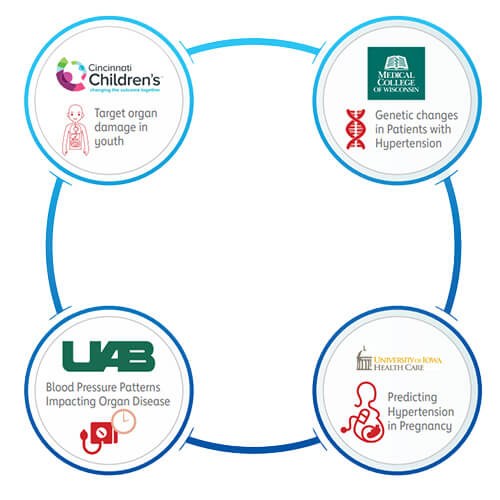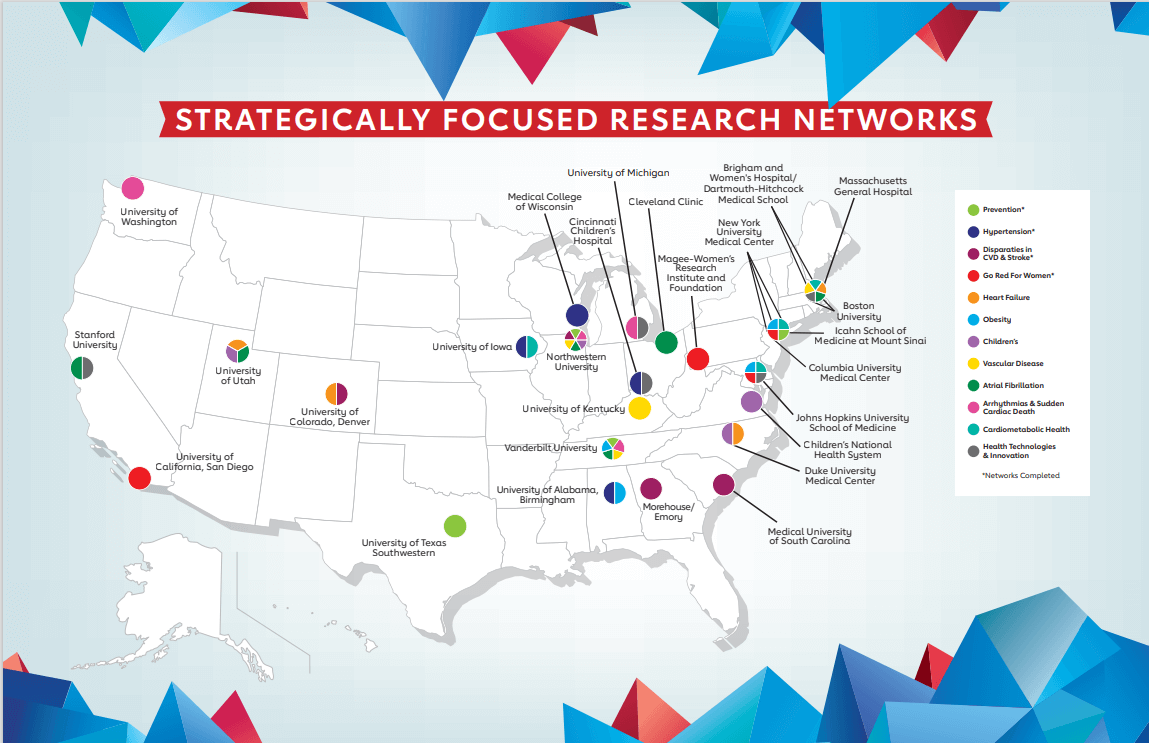Collaborations and Conclusions

End of Network Report Hypertension
Strategically Focused Research Network
Collaborations
One example is the collaborative work of Cincinnati Children’s Hospital. Studying pediatric hypertension is by nature a multi-site endeavor, said Center Director Dr. Elaine Urbina, since pediatric hypertension is not common.
The success of the CCH center was rooted in its ability to develop multiple collaborating centers,
she said.
Their SFRN was itself a collaborative effort, working with researchers at several institutions to complete the project, from nearby University of Cincinnati to Seattle Children’s Hospital.

Cincinnati Children’s shared their collaborative spirit by working with the University of Iowa Hypertension SFRN to gather data on preeclampsia from subjects enrolled in its SHIP AHOY (Study of High Blood Pressure in Pediatrics: Adult Hypertension Onset in Youth) study. Urbina’s team also gathered data in conjunction with the Medial College of Wisconsin for their Hypertension SFRN study.
The Medical College of Wisconsin team also collaborated with the University of Alabama at Birmingham to publish data on clinical and ambulatory blood pressure among African Americans in the Jackson Heart Study, the largest study of its kind studying African Americans and cardiovascular disease.
The University of Iowa also had notable collaborations with partners in industry and at other SFRNs, such as ongoing work with the Go Red for Women™ SFRN at Magee Women’s Research Institute and Foundation, to evaluate the role of vasopressin in post-partum hypertension.
We’re getting this really wide view of what preeclampsia does to women,
said Dr. Mark Santillan, clinical project principal investigator at Iowa. If I had to draw you our collaboration map it would be very branched out. We are continually doing work with others. The SFRN has been a great seed to keep it going.
Conclusion
The goals of the Hypertension SFRN were clear when this work began in 2015:
- Produce a cadre of new investigators who will energize the hypertension field
- Produce new research
- Provide insights into and report on challenges and successful mechanisms for collaboration
- Identify programs/policies that result in individual lifestyle modifications that reduce risk and improve control of hypertension
The network achieved its goals, Lackland said. If you look at the center studies, they have all been very strong,
he said. They have made a great contribution.
Collaboration between centers was a cost-effective way to maximize scientific impact,
Lackland said. While it may have taken researchers' time, it was well spent,
he said.

I think it showed that these groups can work together and the importance of them working together,
he said.
Creating four specific sites focused on hypertension also identified the centers as research hubs in this area, for future investigators interested in this topic, he said. That's a helpful tool for the American Heart Association's additional SFRNs, as well,
Lackland said.
Ongoing SFRNs include networks focused on Heart Failure, Obesity, Children, Vascular Disease, Atrial Fibrillation, Arrhythmias & Sudden Cardiac Death, Cardiometabolic Health & Type 2 Diabetes Mellitus, and Health Technologies & Innovation. Three additional networks have completed work, including: Prevention, Disparities and Go Red For Women™. These sorts of collaborations are the future, said Dr. Muntner from the University of Alabama at Birmingham.
Maybe 50 years ago or 100 years ago you would have a scientist in their lab by themselves making discovery. But science is much more complex now, that bringing together experts in different disciplines, across universities clearly results in better, higher impact results,
he said. This model, if we want to have high-impact scientific discovery, provides a path for doing so.